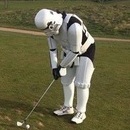IGNORED
The New Ball Flight Laws Are Right, but Misleading
-
Topics Being Discussed Right Now on The Sand Trap
-
- 11,172 replies
- 1,012,532 views
-
"5 Minutes Daily" Practice Challenge 1 2 3 4 1023
By iacas, in Instruction and Playing Tips
- 5 minutes daily
- dedication
- (and 6 more)
- 18,407 replies
- 1,889,368 views
-
- 9 replies
- 269 views
-
- 7 replies
- 333 views
-
- 5 replies
- 943 views
-








Recommended Posts
Create an account or sign in to comment
You need to be a member in order to leave a comment
Create an account
Sign up for a new account in our community. It's easy!
Register a new accountSign in
Already have an account? Sign in here.
Sign In Now